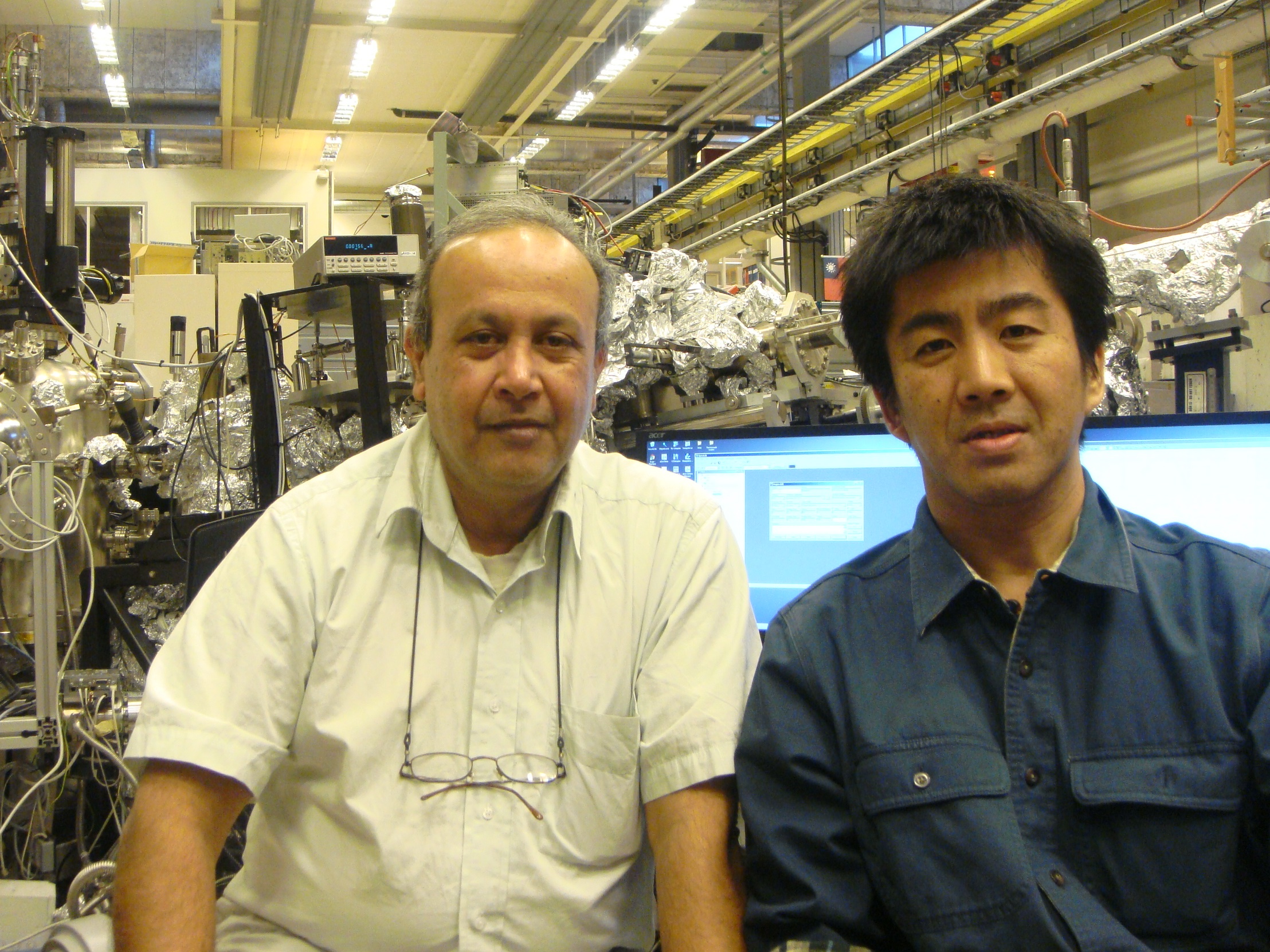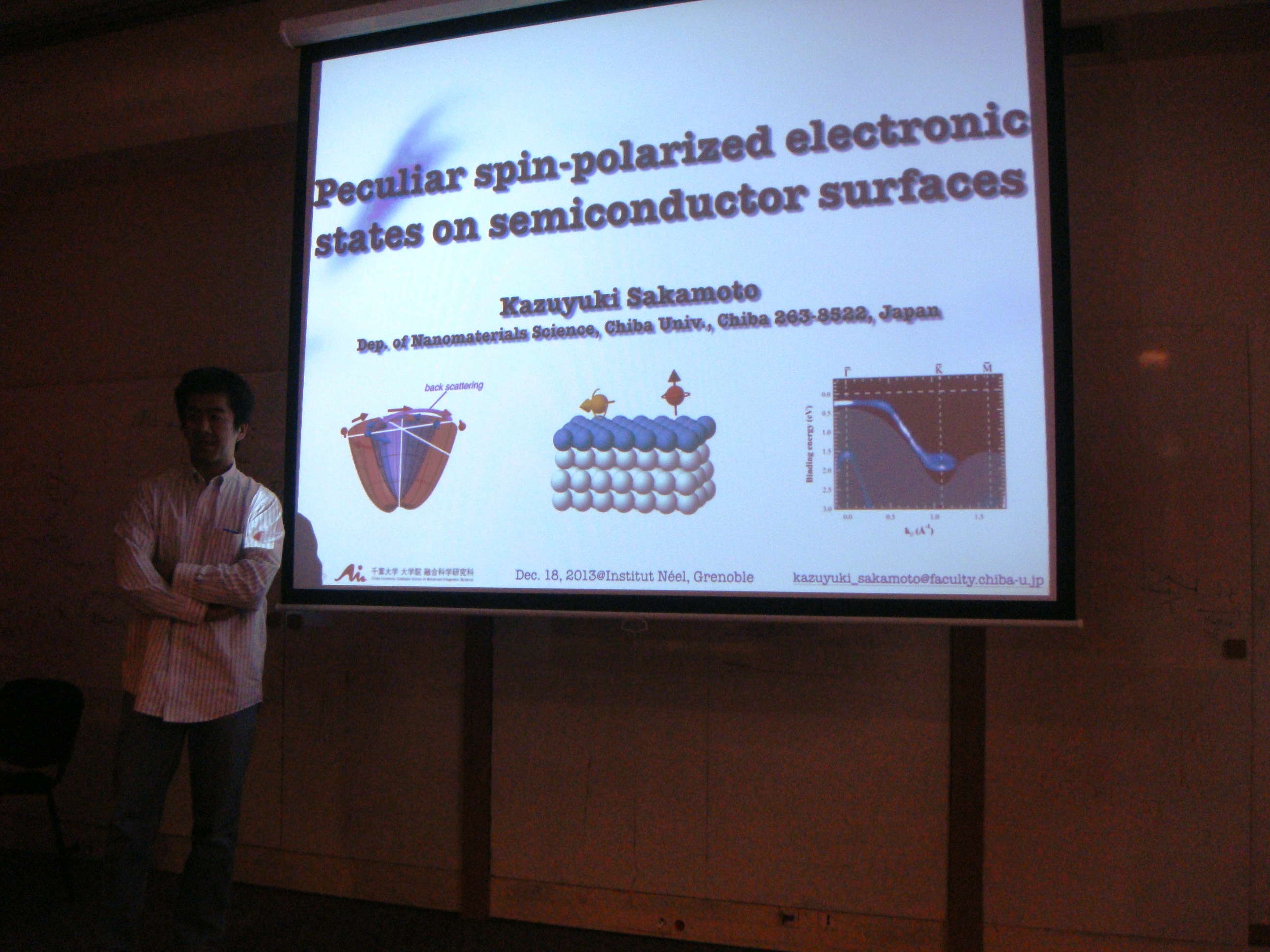Experiments at Max-lab/Seminar at Institute Neel CNRS



Dec.8-19, 2013
Experiments at Max-lab, Sweden
Seminar at Institute Neel CNRS, France
K.Sakamoto
スウェーデンの放射光施設MAX-labのI4ビームラインにおいて、磁性強相関機能性分子の温度によるスピン状態の変化の起源解明と、機能性有機分子単結晶の電子構造の測定を目的に光電子分光測定を行った。具体的には、光電子放出によるチャージアップを防ぐために、試料サイズをマイクロメートルオーダーにした磁性強相関機能性分子の電子状態を室温で測定した。また、機能性有機分子単結晶においては、電荷移動を解明するために最高非占有分子軌道(HOMO)のバンド構造を測定した。
フランスのCNRSのInstitute Neelではスピン流の発現が期待できる機能性表面の講演を行い、同研究所の研究員とこのような表面上に強相関機能性分子を吸着させた場合に発現が期待できる界面での新奇スピン物性、Spinterface、などに関する議論を行った。
“Peculiar spin-polarized electronic states on semiconductor surfaces”
Kazuyuki Sakamoto, Chiba University, Japan
Abstract: Generally, the electronic states of opposite spin orientation are considered to be degenerate in nonmagnetic materials due to the presence of bot h time-reversal symmetry and space-inversion symmetry. In a 2D system such as a crystal surface, the latter symmetry is broken and the degeneracy is lifted by spin-orbit coupling. This effect, which is called the Rashba-Bychkov (RB) effect [1], is a novel exotic low-dimensional solid-state property that produces spin-polarized electronic states even for nonmagnetic materials, and is the key factor for operating a spin field-effect transistor [2] that is one of the most prominent semiconductor spintronics devices. In this talk, I first present peculiar RB effects that originate from the symmetry of the surface, such as the abrupt change of the spin polarization vector to a direction that is not possible to point with normal RB effect [3], and the presence of peculiar vortical RB splitting at a point without time-reversal invariance, which was believed to be a critical condition for RB effect [4]. Then, I show results on RB systems with peculiar spin structures, in which the b ackscattering of electron spin with a non-magnetic impurity are considerably suppressed [5], and also discuss the origin of these spin structures based on a combination of the RB effect and the valley degree of freedom [6]. All these novel quantum phenomena are corroborated by the combination of high-resolution photoemission and spin-resolved photoemission measurements, scanning tunneling microscopy, and a state-of-the-art theoretical calculation. [1] Y.A. Bychkov & E.I. Rashba, JETP Lett. 39, 78 (1984). [2] S. Datta & B. Das, APL 56, 665 (1990). [3] K. Sakamoto et al., PRL 102, 096805 (2009). [4] K. Sakamoto et al., PRL 103, 156801 (2009). [5] K. Sakamoto et al., Nature Comm. 4, 2073 (2013). [6] S. Goswami et al., Nature Phys. 3, 41 (2007).


